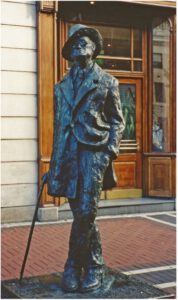The month of June commemorates a turning point in many countries’ LGBTQ+ history. In the U.S., the Stonewall Riots mark this turning point.
The Stonewall Inn is a gay bar located in Greenwich Village. Before the riots, the police routinely raided the Mafia-run gay bars to harass or detain members of the LGBTQ+ community. On the morning of June 28, 1969, a surprise raid took place at the Stonewall Inn. The angry patrons and neighborhood residents, fed up with the constant police harassment and social discrimination, gathered outside the bar and became increasingly agitated about the police aggressively manhandling people. Soon afterward, the onlookers began to throw objects – pennies, bottles, and cobble stones – at the police. The full-blown riot continued for five more days, involving thousands of people clashing with law enforcement on Christopher Street and neighboring roads. The fabulous Marsha P. Johnson, a Black drag queen, is credited for throwing the first stone – although she’s never confirmed it.











